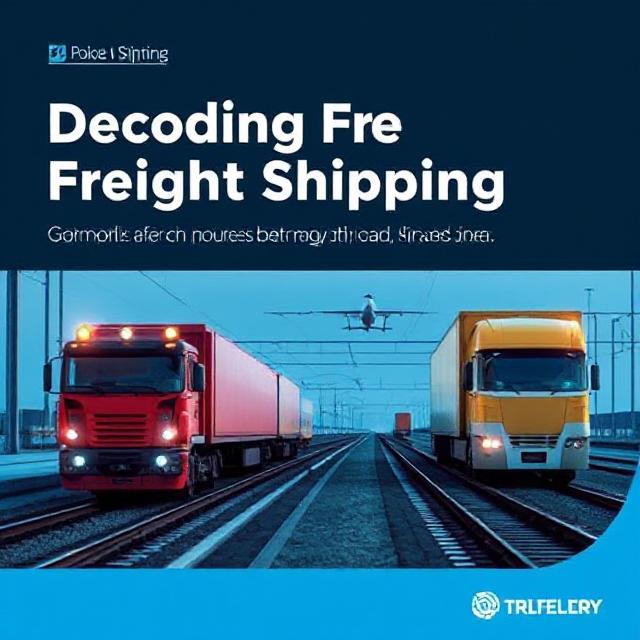Decoding Freight Shipping: Choosing Between Road, Rail, Air, and Sea
Understand the pros and cons of road, rail, air, and sea freight shipping. Discover which mode best fits your cargo needs, timeline, and bud
Shipping cargo is more than just moving goods—it’s a strategic decision that impacts your timeline, costs, and customer satisfaction. With four main freight transportation modes—road, rail, air, and sea—each has its strengths and limitations. Choosing the right one can be the key to efficient logistics.
Let’s decode each mode and guide you toward the best freight shipping option for your business needs.
🚛 Road Freight: For Flexibility and Last-Mile Delivery
How it works:
Road freight relies on trucks or vans to move goods across highways, cities, and rural areas.
Pros:
- Door-to-door delivery
- Flexible routes and scheduling
- Fast for regional or local delivery
Cons:
- Traffic delays
- Subject to weather and road conditions
- Less economical for bulk shipments
Ideal for:
E-commerce orders, retail deliveries, perishables, short-haul logistics
🚆 Rail Freight: For Heavy Loads and Land-Based Routes
How it works:
Rail freight uses trains to move large quantities of goods over long distances across land.
Pros:
- Cost-effective for bulk shipping
- Environmentally friendly
- Reliable schedules with minimal delays
Cons:
- Fixed routes and less flexibility
- Requires transfer to road transport for final delivery
- Limited access in some regions
Ideal for:
Raw materials, industrial goods, large volume or heavy shipments
✈️ Air Freight: For Speed and Time-Sensitive Cargo
How it works:
Air freight moves goods through cargo planes or commercial flights, ideal for quick international delivery.
Pros:
- Fastest shipping method
- High security and minimal handling
- Great for global reach
Cons:
- Expensive compared to other modes
- Limited by size and weight
- Environmental impact
Ideal for:
Electronics, pharmaceuticals, high-value or urgent shipments
🚢 Sea Freight: For Bulk and International Shipments
How it works:
Sea freight uses container ships to transport goods across oceans and seas.
Pros:
- Economical for large shipments
- Handles oversized and hazardous cargo
- Suitable for global trade routes
Cons:
- Slow transit times
- Port congestion and customs delays
- Requires land transport to complete delivery
Ideal for:
Machinery, furniture, textiles, global exports
🧭 How to Choose the Right Mode
Ask these key questions to guide your decision:
- How fast does the shipment need to arrive?
Use air for urgent, road for fast local delivery, rail/sea for long-term planning. - What’s your budget?
Sea and rail are cost-effective; air is premium-priced. - How large or heavy is your cargo?
Sea and rail handle bulk and heavy freight best. - Is the destination domestic or international?
Road and rail work best inland; air and sea for global reach.
🌐 Combine for Efficiency: Intermodal Freight
Often, the best solution combines two or more methods—called intermodal freight. For example: ship by sea, then deliver inland by road. This hybrid approach offers cost and time optimization across complex supply chains.
✅ Conclusion: Make Smarter Freight Decisions
Freight shipping is not one-size-fits-all. By understanding the unique benefits and limitations of road, rail, air, and sea transport, you can make smarter decisions that save money, meet deadlines, and enhance customer satisfaction.
The right freight mode isn’t just about transportation—it’s about powering your supply chain forward.

